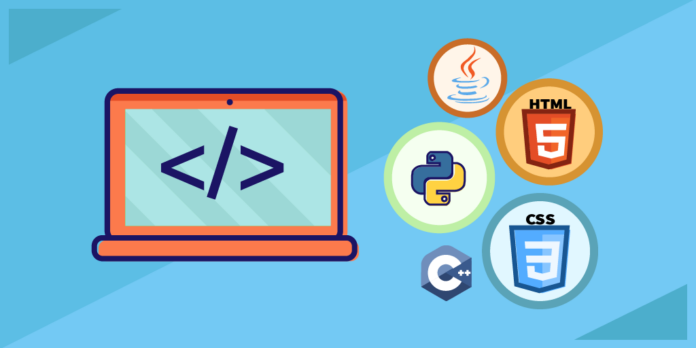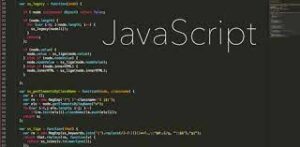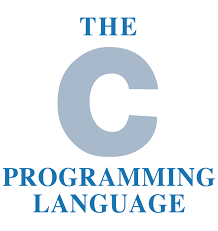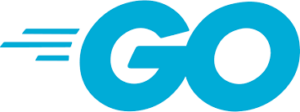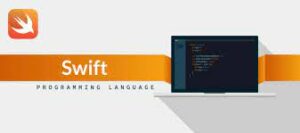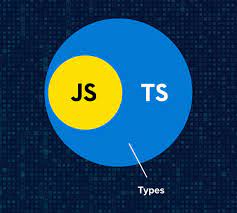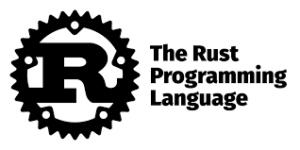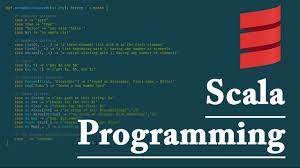Best and most efficient languages for programming will be described in this article. Naturally, we had to perform some research in order to compile this list. Everything was considered, including the developer skill pool, popularity, number of GitHub repositories, and most recent modifications. It’s vital to clarify that just because a language is higher on the list doesn’t mean it is inherently superior to another. Other languages are more general-purpose, while others are more specialised. The kind of work you need to undertake will determine this in significant part. Let’s go to the list without further ado.
Top 15 Best Languages for Programming In 2022
Top 15 Best Languages for Programming are explained here.
1. Python
This is another languages for programming. Python’s versatility and breadth of usage have demonstrated that it is one of the best programming languages currently accessible. A Dutch programmer named Guido van Rossum was responsible for its debut appearance on monitors in 1990. Python is exhibiting no signs of slowing down anytime soon, with over 115 thousand repositories on GitHub and a trend of rising interest.
Platform:
Desktop and Web
Appropriate for:
- Website creation
- Mathematical and scientific procedures
- Data science, machine learning, and artificial intelligence
- Apps for companies
Advantages:
- Flexible.
- Open-source.
- A large selection of support libraries.
- Readable code that is intuitive.
- Supports many different platforms.
- Ample official support materials, including tutorials.
- Follows the tenets of object-oriented programming (OOP).
- Increases a coder’s output.
- Simple scaling, even for sophisticated applications.
- It provides a setting that is helpful for experimenting with concepts and creating prototypes.
- A sizable community that is ever-expanding.
Disadvantages:
- Basic database capabilities.
- Incompatible with mobile development.
- A dearth of early programming fundamentals
Python is slower because it is an interpreted programming language.
Threading is exacerbated by Global Interpreter Lock (GIL).
2. JavaScript
High-level programming language JavaScript has long been used extensively in web development. It was produced by Brandan Eich and initially made available in 1995. It was often thought to be restricted to front-end development, but with frameworks like Node.JS, it is now also capable of strong server-side programming. At the beginning of 2020, there were more than 125 thousand JS projects on GitHub, making it one of the most popular languages. Also check Technology trends
Platform:
Mobile and Web
Appropriate for:
- Website creation
- Back-end programming
- Serverless technology
- Mobile app creation
- Game creation
Advantages:
- Simple learning curve.
- Complete flexibility and variety.
- Extremely quick, particularly on the client-side.
- Simple to implement.
- Compatibility with other programming languages is good.
- Support for executable snippets in Greasemonkey and other add-ons.
- It offers resources for creating web interfaces with greater detail.
JavaScript applications lighten the burden on the servers.
- The ECMAScript specification is updated frequently.
- Strong community backing.
Disadvantages:
- It prohibits the use of numerous inheritances.
- JavaScript is interpreted differently by different web browsers.
- No imitation or similar technique.
- Some users turn off JavaScript in their browsers.
3. Java
James Gosling developed Java, a general-purpose programming language, in 1995. that would follow WORA’s guidelines (Write Once, Run Anywhere). Since then, it has consistently been a reliable option for numerous businesses in need of software. Because of its stability, large enterprises have historically preferred it more. On GitHub, there are more than 86k repositories as of this writing. Despite a modest decline in use, it is still one of the most common languages in use today. This is another languages for programming.
Platform:
Web, desktop, and mobile
Appropriate for:
- Creating Android applications
- Website creation
Large Data
- Business software creation
Advantages:
- Follows OOP guidelines.
- A vast selection of open-source libraries and APIs for various purposes.
- Tools for Rapid Application Development that are open-source (RAD).
- An excellent place to start when developing a programmer’s mindset.
- Can access the file system, sound, and graphics; runs on the majority of operating systems.
- Automatic trash removal.
- Memory and stack allocation schemes.
- Cross-platform independence is provided via the Java Virtual Machine (JVM).
- A higher level of security is guaranteed by combining explicit pointer execution with access to classes having a security manager.
- Support for multithreading.
- An excellent option for distributed programming.
Disadvantages:
- A difficult vocabulary.
- Memory administration is pricey.
- A constrained absence of templates.
- More sluggish than certain other languages, such C/C++
4. C
Among programming languages, C is a seasoned pro. Dennis Ritchie first published it in 1972, and since then, it has undergone numerous revisions and served as a foundation for the development of new languages like C++ and C#. But it still holds true. In fact, it was named the top programming language of 2019 by TIOBE.
Platform:
Computer, mobile, and embedded
Appropriate for:
- Embedded devices
- Real-time systems and IoT
- Deep learning, machine learning, and AI
- Game creation
Advantages:
- Effective and understandable.
- Quick programme operation.
- Appropriate for learning the fundamentals of coding on low-end hardware.
- Access to items that other languages have concealed or banned.
- Better portability
- Simple debugging and testing procedures.
Disadvantages:
- Difficult for beginners to learn due to complex syntax.
- The absence of programme namespace support.
- A little dated and unable to address some contemporary issues.
- High-level constructs must be manually generated.
- There is no memory allocation or trash collection.
- A lack of run-time verification.
- The lack of stringent type-checking capabilities.
- A little standard library.
- Frequent buffer overflows and memory corruption.
- C#
This is another languages for programming. Microsoft is a supporter of this all-purpose programming language that was introduced in 2000. It is a piece of its.NET initiative, which is still active today. Through Unity, it’s commonly utilised for backend programming, business software, and game creation. With over 21,000 repositories, GitHub has established itself as a trustworthy programming platform.
Platform:
PC, Web, and mobile
Appropriate for:
- Business software creation
Web server programming
- Website creation
- Game creation
Advantages:
- Follows component- and object-oriented paradigms.
- A simple learning curve for those who are familiar with C.
- Performs incredibly well on platforms with Windows.
- Integration with a powerful.NET platform, whose array of libraries expands this language’s potential
- When compared to the majority of other languages, the time needed for compilation and execution is shorter.
- C# offers a more secure environment than both C and C++ because it forbids the use of pointer types and supports type safety.
- Working with shared codebases is possible.
- It can be scaled up and down easily.
- A huge selection of library functions and data types.
Disadvantages:
Pointers are still allowed in unsafe blocks.
- The learning curve for the C family of languages is rather steep if you’re not already familiar with them.
- Deallocation of implicit memory.
- The treatment of errors is a difficult task.
- Not as adaptable as C++.
6. C++
Developed in 1983 as a C extension by Danish computer scientist Bjarne Stroustrup. It has since developed into a strong, independent high-level programming language. With the STL set of libraries and its speed and stability, C++ is a fantastic option for creating dependable applications. Also check instagram analytics
Platform:
Computer, mobile, and embedded
Appropriate for:
- Embedded devices
- Real-time systems and IoT
- Deep learning, machine learning, and AI
- Game creation
- Visual compilers
Advantages:
- A large selection of compilers and libraries.
- Effective and understandable.
- Quick programme operation.
- Appropriate for learning the fundamentals of coding on low-end hardware.
- The least amount of hindrance possible due to the proximity to the hardware
- Compared to most other languages, it is thought to have a higher level of control.
- The ability to create for multiple platforms.
- Features for handling exceptions and function overload.
Disadvantages:
- Difficult for beginners to learn due to complex syntax.
- The size of the basic library is modest.
- Comparing object orientation to other languages, it is rather basic.
- There is no memory allocation or trash collection.
- A lack of run-time verification.
- Frequent buffer overflows and memory corruption.
7. Go
A growing programming language is presented here. In 2009, Robert Griesemer, Rob Pike, and Ken Thompson developed it at Google. Its almost 35,000 repositories on GitHub attest to how quickly it is expanding. It’s a wonderful moment to get on board since a major company like Google is supporting it. This is another languages for programming.
Platform:
Web, desktop, and mobile
Appropriate for:
- Cloud-native programming
- Single-page software (SPA)
- Serverless technology
- IoT
- Website creation
- Apps for companies
- Console utilities
Advantages:
- Concurrency with message passing via CSP.
- One of the quicker languages due to direct compilation into machine code.
- Concurrent programming is simple.
- Greater security due to the fact that it is a statically typed language.
- Beginner-friendly. Simple and straightforward syntax.
It is simpler to work with primitive types thanks to the standard library.
Go benefits from Google’s backing.
- Documentation that is well-written.
Disadvantages:
- No centralised management of dependencies.
- Absence of virtual machine features.
- A lack of GUI support and library support.
Implementation of implicit interfaces.
- Less adaptable than other widely used languages
8. PHP
This is another languages for programming. Rasmus Lerdorf developed PHP, one of the most popular general-purpose backend programming languages, in 1995. It even has a lot to present, and many established large organisations still actively utilise it today, despite its recent decline in popularity. The evidence for this is the enormous skill pool and the more than 52k GitHub repositories.
Platform:
Web
Appropriate for:
- CMS system creation
- Server-side web programming
- Independent web design
- Retail apps
Advantages:
- Follows OOP guidelines.
It Supports functional programming paradigms.
- PHP is simple to use.
- A sizable community with open-source initiatives.
- A variety of frameworks are available that increase PHP’s functionality.
- A functional mechanism for deployment and testing automatically.
- Xdebug is regarded as one of the top debugging tools.
Disadvantages:
- No tools for dealing with mistakes.
- Some people think it’s less secure than other languages.
- A somewhat sluggish process of development.
- Additional extensions are required for PHP to function at its best.
9. Swift
The preferred programming language on Apple platforms is Swift. It was developed by an internal team headed by Chris Lattner in 2014, and ever since, it has been used for the creation of their apps. Despite this platform restriction, demand for Apple products is still rising. Swift was able to draw many forward-thinking developers as a result.
Platform:
Web, desktop, and mobile
Appropriate for:
- iOS mobile app development
- IoT
In-depth learning
- Support for client-side programming with WebAssembly
Advantages:
- The language is simple to read because it resembles genuine English.
- A quick development cycle, particularly when applied to both the front-end and the back-end.
- Protection against memory leaks thanks to the effective Automatic Memory Management.
- It makes Swift scalable by enabling developers to add and enhance its features.
- Compatible with Objective-C nicely.
With any platform, server-side integration is feasible.
- Sharing the code is simple.
- Swift has Apple’s support.
Disadvantages:
- Unstable because of continuous updating.
- A lower user base than for more established languages.
- Older than iOS7 legacy apps are not supported by Swift.
10. Ruby
The aim behind the creation of the general-purpose language Ruby was to bring together the greatest elements of various languages like Smalltalk, Perl, and Eiffel. It was created in 1995 by Yukihiro Matsumoto and is regarded as a more specialised option because it is less popular than languages like Python or JavaScript. However, because of its renowned Ruby on Rails foundation, it continues to have a significant community. This is another languages for programming. Also check Goodworld alternatives
Platform:
Web
Appropriate for:
- Front-end web design
- Backend website design
- Data evaluation
Advantages:
- Open-source and flexible.
- Simple syntax without specialised vocabulary.
- Follows OOP guidelines.
- The capability of collecting trash.
- Support for frameworks and tools.
- A very quick rate of development.
- In comparison to other languages, the final code is typically more condensed.
- A committed support network.
- A great number of “gems” and libraries.
Disadvantages:
- It was challenging to adapt to the original code language.
- Ruby has run-time problems and is typically challenging to debug.
- Slow runtime velocity.
11. R
This is another languages for programming. The R programming language has established itself as a preferred tool for data research and machine learning. Ross Ihaka and Robert Gentleman created it in 1995. Even though it’s not a general-purpose language like many others on this list, it’s regarded as one of the top options for data analytics and statistics.
Platform:
Desktop
Appropriate for:
- Statistical analysis
- Data analysis
- Machine learning and AI
Advantages:
- Excellent for statistical research.
- An easy-to-use statistical language coding process.
It is 100 percent open-source.
- Flexible and scalable to meet your needs.
- Assistance with Linux/GNU development.
- Platform-independent language.
- A thriving local community.
- An effective package ecosystem.
Disadvantages:
- Some packages’ worse quality.
- Can use up all of the memory because to inadequate memory management abilities.
- R is missing a few security measures.
- There aren’t any set programming standards.
12. TypeScript
A superset of JavaScript, TypeScript is a programming language created by Microsoft in 2012. With more than 30 thousand repositories, it has been one of the fastest-growing technologies on GitHub. By incrementally enhancing the well-established JavaScript with minimal changes, TypeScript was destined to take off. This is another languages for programming.
Platform:
Mobile and Web
Appropriate for:
- Website creation
- Back-end programming
- Serverless technology
- Mobile app creation
- Game creation
Advantages:
The language is freely available.
- Smoothly integrates with JavaScript.
- Simple to learn for anyone who is familiar with JavaScript.
- The ECMAScript specification is updated frequently.
- Structural and strict typing types.
Features of object-oriented programming are covered.
- The enormous JavaScript support community is advantageous to you.
Disadvantages:
- No package manager is present.
- The typing system is complex and challenging to learn.
- Required compilation.
- Even with all the securities in place, it’s not completely secure.
13. Rust
A programming language called Rust is based on the syntax of C++. With an emphasis on performance and safety, Graydon Hoare at Mozilla developed it in 2012. It gained popularity after the release and has been ranked as StackOverflow’s most beloved language every year since 2016. This is another languages for programming.
Platform:
Computer, mobile, and embedded
Appropriate for:
- Embedded devices
- Real-time systems and IoT
- Deep learning, machine learning, and AI
- Game creation
- Visual compilers
Advantages:
- High level of security attained through limiting access to unused memory segments.
- Pay attention to the rate of development.
- Rust functions well on a variety of operating systems.
- Effective error management.
- Developed using the greatest features of C++.
- Although it excels at low-level programming, it also contains a tonne of high-level strategies.
Disadvantages:
- More difficult to learn than many other languages.
- The Rust programming language has a limited support group and is still relatively new.
- It lacks any garbage collecting capabilities.
- Rust produces big files.
- Compilation requires a greater amount of time.
14. Scala
This is another languages for programming. Martin Odersky created the general-purpose language Scala in 2004. The primary motivation for it was to make Java better. Due to its rectified flaws and two languages’ compatibility, it became well-liked among the Java developer community.
Platform:
Web, desktop, and mobile
Appropriate for:
- Creating Android applications
- Website creation
Tools for data
- Business software creation
Advantages:
- Follows OOP guidelines.
- The virtual machine is strong.
- Scala was created with Java’s best features in mind.
- Concurrent programming is made simple by the language.
- A programming language with strong typing, which increases bug resistance.
- It offers a variety of data kinds.
Disadvantages:
- Profound learning curve
- The talent pool is modest and the community is not very large.
- Several of Scala’s tools aren’t developed sufficiently when compared to Java.
15. MATLAB
For data analysis and matrix manipulation, MATLAB is a potent tool and programming language. The first functional versions of it date back to the late 1970s, making it one of the oldest items on this list, but it is still cutting-edge and relevant today. At the time of writing, the most recent stable release was in March 2020. This is another languages for programming.
Platform:
Desktop
Appropriate for:
- Mathematical computation
- Data mining
- Computerized intelligence
- Machine vision
- Photo editing
- Developing apps
- GUI creation
- Simulations used in science
Advantages:
- It includes a big library.
- Converts to and works well with other languages including Python, C, C++, and Java.
- A variety of toolboxes that increase this language’s potential.
- It functions on any platform.
- Prior to execution, MATLAB does not require compilation of the code.
- It includes tools for data viewing and debugging.
- Solid documentation and official assistance.
Disadvantages:
- Because it is proprietary, using MATLAB costs money.
- It’s a specialised language with limited applications outside of its area.
- Because it is an interpreted language, the speed is slower.
- Profound learning curve
Rounding it Up
Any software development company must keep abreast of the most recent technological advancements. The same is true for being current with the top programming languages. Every single one is unique, just like no two projects are same. Making the right tool selection is essential to success. Because of this, being knowledgeable about all the changes, releases, and what they contain enables Digital Skynet to produce custom software as quickly as possible.
